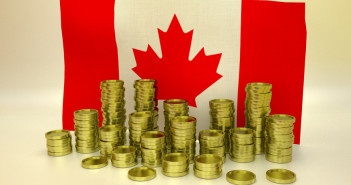Heading into the last trading day of the quarter, assets correlated with risk appetite are taking a slight breather after the push higher over the last two days as a result of Janet Yellen’s cautious commentary that juiced high-yielding assets. The overnight Asian session saw the Nikkei finish its session down by 0.7%, while the major bourses in Europe are situated in the red midway through their trading day. Sentiment has recovered somewhat as traders get set for the North American open, with S&P futures pivoting around the unchanged mark ahead of the opening bell.
While global equities have taken pause for the moment, the theme of bashing the greenback lower as US yields depress has continued this morning. The American buck continues to weaken across the major currency pairs, with the euro leading the charge after flash inflation figures for the month of March came in as expected, with the core rate holding ticking up on a year-over-year basis to 0.90%.
Crude prices are having trouble gaining traction as they have all week, with particular softness this morning as OPEC reported March output rose to 32.5mln barrels/day as compared to the 32.4mln barrels/day reported in February, suggesting that without a specific agreement in place, there is no appetite even among OPEC members to adhere to capping any production. The front month WTI contract slid below $38 earlier this morning, though the black gold ran into firm support which has helped it recoup its earlier losses.
USDCAD has traded heavy since Yellen’s speech earlier in the week, with similar price action dominating the overnight session as touted month-end fixing flows drag the pair lower. Yesterday Deputy Lynn Patterson warned that the full effect from the impact of lost income in the oil patch has yet to work its way through the Canadian economy, predicting aggregate household income would fall in Canada as a result, slowing consumer spending and putting a drag on growth. Patterson also cautioned the benefit from a sliding Canadian dollar will take its time to work its way through the economy, specifically not until the economy rebuilds capacity lost during the years of lofty oil prices where capacity was lost to other lower-cost labour markets. While not commenting on the current price action of the loonie, the recent rally of roughly 12% in the last ten weeks may be somewhat concerning given the lack of a strong trend in non-energy export growth. That being said, GDP growth for the month of January was released this morning and showed a shocking increase of 0.6% on a month over month basis, following on the heels of the already better than expected 0.2% growth rate witnessed in December. The loonie has rallied off the news 2016 started off on a much better foot than expected, and it will be a tough slog for USDCAD bulls to repair the technical damage that has been caused over the last week.
Further reading:
American buck continues to weaken
GDP



